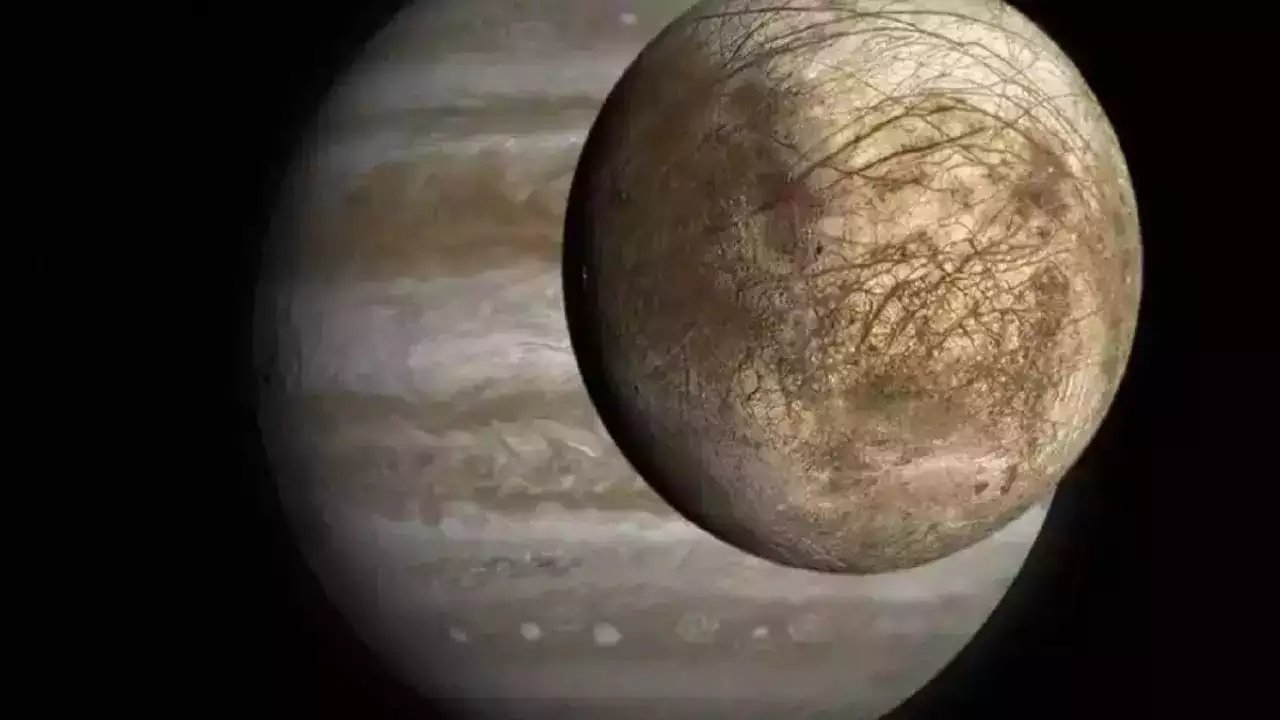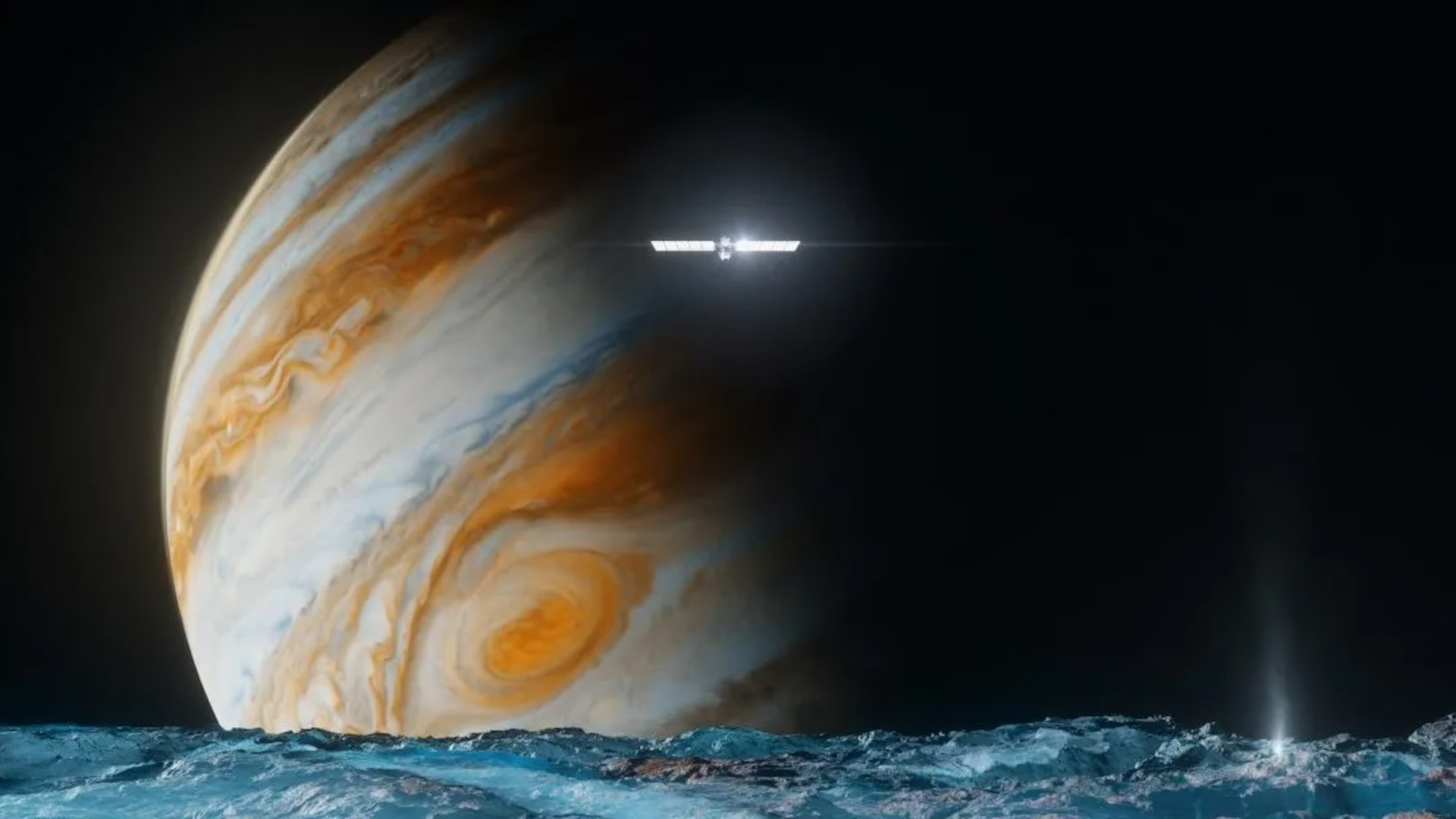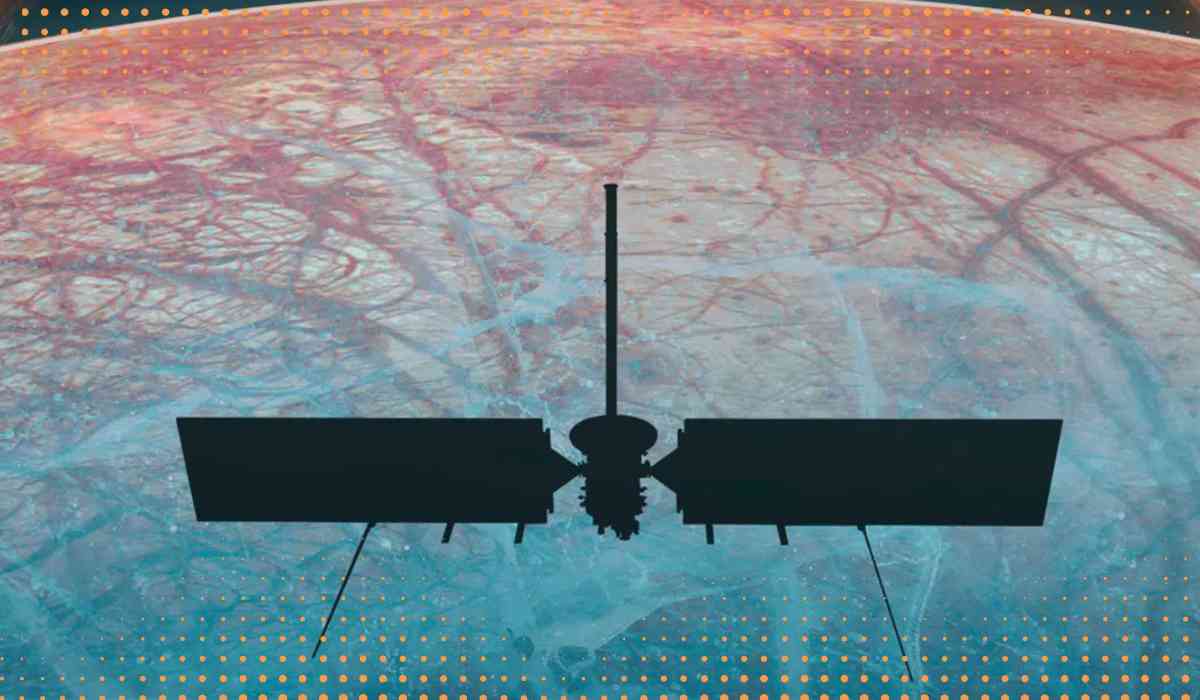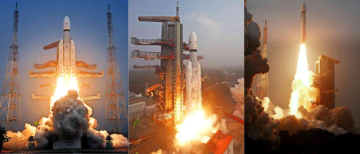On Monday, NASA successfully launched its Europa Clipper spacecraft from Florida's Kennedy Space Center, embarking on a mission to determine if Jupiter's moon, Europa, has the conditions necessary to support life. The mission will focus on the vast subsurface ocean believed to exist beneath Europa's thick ice shell.
The Europa Clipper was launched aboard a SpaceX Falcon Heavy rocket under sunny skies. The spacecraft is solar-powered and is expected to reach Jupiter in 2030 after traveling approximately 1.8 billion miles (2.9 billion km) over 5.5 years. Originally scheduled for the previous week, the launch was delayed due to Hurricane Milton.
At around 100 feet long and 58 feet wide with its solar arrays fully deployed, Europa Clipper is NASA’s largest spacecraft built for planetary exploration, weighing approximately 13,000 pounds (6,000 kg). Its size surpasses that of a basketball court, showcasing the scale of this ambitious mission.
Europa: A Moon with a Hidden Ocean

Despite being only a quarter of Earth’s diameter, Europa, the fourth-largest of Jupiter’s 95 moons, holds a global ocean of salty water beneath its icy crust. This ocean is believed to contain twice as much water as Earth's oceans, making it a key target for the search for life in our solar system.
With a diameter of about 1,940 miles (3,100 km), Europa is about 90% the size of Earth's moon. Its ice shell, estimated to be 10 to 15 miles (15-25 km) thick, sits atop an ocean that may reach depths of 40 to 100 miles (60-150 km). Scientists view Europa as one of the most promising locations in the solar system for finding conditions that could support life.
Mission Objectives and Challenges

The Europa Clipper’s mission includes studying the subsurface ocean, mapping Europa’s surface composition, and searching for plumes of water vapor that might be venting through the ice. Over three years, starting in 2031, the spacecraft will conduct 49 close flybys of Europa, coming within 16 miles (25 km) of the moon’s surface.
Operating near Jupiter poses significant challenges due to the planet’s intense radiation, which is 20,000 times stronger than Earth's magnetic field. To protect Europa Clipper's electronics, NASA equipped the spacecraft with a vault made of titanium and aluminum. This will shield its sensitive instruments while it gathers crucial data on Europa’s environment.
With inputs from agencies
Image Source: Multiple agencies
© Copyright 2024. All Rights Reserved Powered by Vygr Media
























